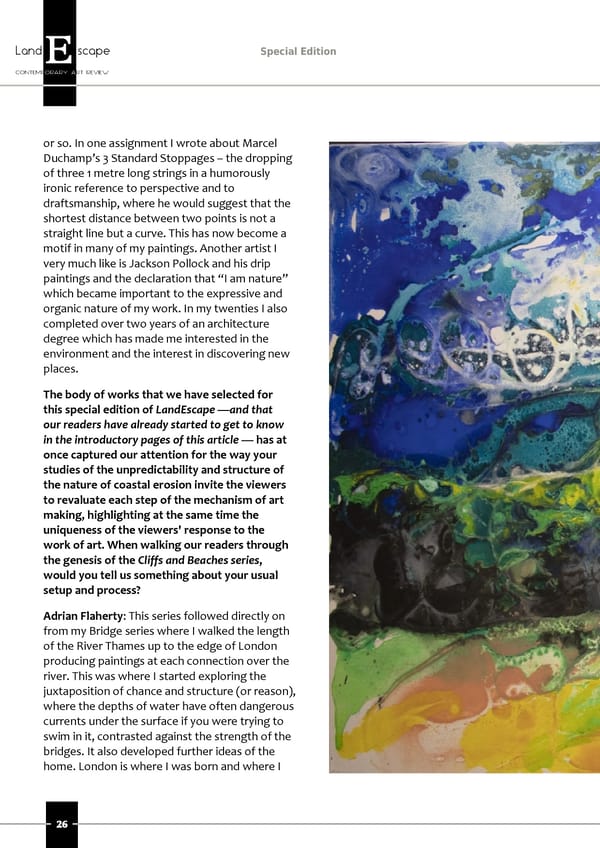Land scape Special Edition CONTEMPORARY ART REVIEW or so. In one assignment I wrote about Marcel Duchamp’s 3 Standard Stoppages – the dropping of three 1 metre long strings in a humorously ironic reference to perspective and to draftsmanship, where he would suggest that the shortest distance between two points is not a straight line but a curve. This has now become a motif in many of my paintings. Another artist I very much like is Jackson Pollock and his drip paintings and the declaration that “I am nature” which became important to the expressive and organic nature of my work. In my twenties I also completed over two years of an architecture degree which has made me interested in the environment and the interest in discovering new places. The body of works that we have selected for this special edition of LandEscape —and that our readers have already started to get to know in the introductory pages of this article — has at oncecaptured our attention for the way your studies of the unpredictability and structure of the nature of coastal erosion invite the viewers to revaluate each step of the mechanism of art making, highlighting at the same time the uniqueness of the viewers' response to the work of art. When walking our readers through the genesis of the Cliffs and Beaches series, would you tell us something about your usual setup and process? Adrian Flaherty: This series followed directly on from my Bridge series where I walked the length of the River Thames up to the edge of London producing paintings at each connection over the river. This was where I started exploring the juxtaposition of chance and structure (or reason), where the depths of water have often dangerous currents under the surface if you were trying to swim in it, contrasted against the strength of the bridges. It also developed further ideas of the home. London is where I was born and where I
 LandEscape Art Review, vol.72 Page 75 Page 77
LandEscape Art Review, vol.72 Page 75 Page 77